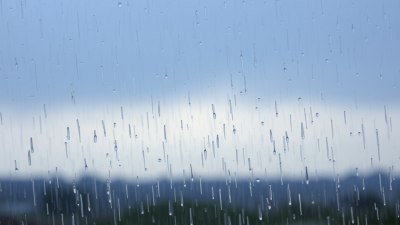When the Weather Goes Freelance and Ignores the App
Explore why weather sometimes defies apps and the impact on forecasts and daily life in this in-depth analysis.

Image created with Flux Schnell
Weather forecasts have become an integral part of our daily routine. Typically, we rely on weather apps and online updates to plan everything from our daily commute to weekend outings. However, anyone who has glanced outside only to find the sun shining during a predicted downpour knows the frustration of weather that goes freelance and seems to ignore modern forecasting technology. This phenomenon may seem like simple unpredictability, but understanding the underlying factors reveals much about meteorological science and the challenges involved in weather prediction.
The Basics of Weather Forecasting
Weather forecasting is a complex science that combines data from various sources such as satellite imagery, radar, weather stations, and atmospheric sensors. Meteorologists use numerical weather prediction models that simulate atmospheric processes based on physics and fluid dynamics. These models help generate forecasts that range from minutes ahead to weeks in the future.
Despite technological advances, weather remains inherently chaotic due to the atmosphere’s sensitivity to initial conditions, known as the butterfly effect. Small inaccuracies in data can grow, causing errors in forecasts, especially beyond a seven to ten-day period.
Why Weather Sometimes Ignores the App
There are several reasons why weather forecasts may fail or why actual conditions deviate significantly from what an app predicts. First, local microclimates dramatically affect immediate weather conditions. For example, valleys, urban heat islands, or proximity to large bodies of water can create weather patterns vastly different from those detected by broader regional sensors.
Second, rapid weather changes such as sudden storms or unexpected cloud formation can occur faster than forecast models update. These phenomena are often triggered by minor atmospheric instabilities that models cannot predict precisely at all times.
Third, the resolution of the forecast model and the app's data update frequency play crucial roles. Many free or consumer-grade weather apps rely on generalized data with updates every few hours. This lag and lack of granularity mean that specific spots can experience weather that the app’s regional model does not capture accurately.
Complexities of Atmospheric Behavior
The atmosphere is a highly dynamic system where temperature, humidity, pressure, wind, and topography interact in nonlinear ways. Weather models incorporate equations governing thermodynamics and fluid dynamics, but predicting the exact movement of air masses and precipitation involves approximations.
Moreover, atmospheric phenomena such as convection, turbulence, and cloud microphysics have scales smaller than those resolved by many standard models. This results in uncertainties concerning precisely when and where rain or clouds will form.
The Impact of Local Geography
Local geographic features influence weather variations that often escape generalized app forecasts. Mountain ranges can block or channel winds, causing rain shadows or funneling storms into unexpected locations. Urban environments may elevate temperature through the heat island effect and influence local convection patterns.
Coastal areas add another layer of complexity where land-sea breezes form daily cycles of wind and moisture that can alter cloud and precipitation formations in ways a basic app forecast cannot predict with high resolution.
Challenges for Weather Apps
Weather apps strive to balance comprehensive data and user-friendly interfaces. However, limitations exist in collecting data from all possible local points and in computational power to update models rapidly at high resolution. Most apps rely on national weather services or commercial providers who generate forecasts based on grid points several kilometers apart.
This means localized phenomena smaller than the grid resolution may not be represented accurately. When storms form suddenly or local terrain effects dominate, the app’s forecast may miss those details, leading users to experience weather surprises.
Case Studies of Weather Defying Forecasts
Consider sudden thunderstorms that appear unexpectedly during seemingly clear mornings, or fog forming rapidly in valleys despite clear skies a few hours earlier. Such events have caught many off-guard despite reliable regional forecasts.
Another example is rapid temperature changes in mountainous terrain. The temperature can drop or rise significantly within a few kilometers due to elevation changes and wind movement that larger-scale models fail to depict precisely.
How Meteorologists Handle Uncertainty
Meteorologists address forecast uncertainty using probabilities and ensemble modeling. Instead of giving a single deterministic value, modern predictions often include chances of rain or temperature ranges to reflect confidence levels.
Ensemble forecasts run multiple simulations with slightly varied initial conditions to capture a range of possible outcomes, helping to estimate uncertainty. Communicating this uncertainty to users is a challenge but crucial to avoid misplaced trust in a single forecast output.
Improving Accuracy: The Role of Technology
Advances in machine learning, increased deployment of local sensors, and enhanced satellite technology are helping improve forecast precision. High-resolution models that update more frequently and incorporate data from ground-based IoT weather stations aim to capture local weather variations better.
Initiatives to crowdsource weather data from smartphones and connected weather stations also enrich datasets. These efforts help refine predictions closer to where users live and work, reducing the occurrence of unexpected weather situations.
The Human Element in Weather Interpretation
Though technology advances, human experience remains important in interpreting forecasts. Local meteorologists often integrate model data with knowledge of terrain and historical patterns to provide context-sensitive advice. Their insight helps users understand when the weather may 'go freelance' and what precautions to take.
Users themselves become more educated about weather limitations and learn to consult multiple sources, using apps as guides rather than absolute truth, incorporating visual observation and common sense into decisions.
Psychological and Practical Effects of Unreliable Weather Apps
When weather apps fail, it undermines user confidence and can cause inconvenience or even safety risks. Misplaced trust in a forecast that predicts sunshine while rain falls unexpectedly may lead to unpreparedness. Conversely, overcautious responses to unlikely warnings can disrupt plans unnecessarily.
Balancing trust with skepticism requires awareness of forecasting limitations and an adaptive mindset toward weather variability. Understanding that weather can behave independently of app forecasts helps manage expectations and improve personal decision-making.
The Broader Implications of Weather Unpredictability
Variability and unpredictability in weather have profound impacts beyond daily life, affecting industries like agriculture, aviation, and emergency management. Crop planning depends heavily on rain forecasts; sudden changes can damage yields. Airlines must adapt flight plans to turbulence or storm development that might not appear in coarse models.
Emergency responders rely on accurate storm tracking, and inaccuracies may lead to inefficient resource allocation. Increasing urbanization and climate change add further complexity, requiring more precise and dynamic forecasting capabilities.
Future Directions for Forecasting Technology
Looking ahead, integrating real-time data streams from drones, satellites, and ground sensors with AI-powered models holds promise. These technologies can identify emerging weather features earlier and with finer spatial detail, leading to improved short-term forecasts.
Enhanced user interfaces that explain forecast confidence and potential variability can empower users. Personalized weather alerts tailored to location and activity type may reduce surprises when weather deviates from standard app predictions.
Learning to Live with Weather’s Wild Side
Ultimately, weather’s freelance nature is part of its beauty and challenge. It reminds us of the atmosphere’s immense complexity and the limits of human prediction. By combining technological advances, informed human judgment, and user adaptability, society can better coexist with weather’s variability.
While apps remain valuable tools, understanding their limitations encourages a respectful relationship with nature’s unpredictability, ensuring preparedness even when weather decides to ignore the script.











